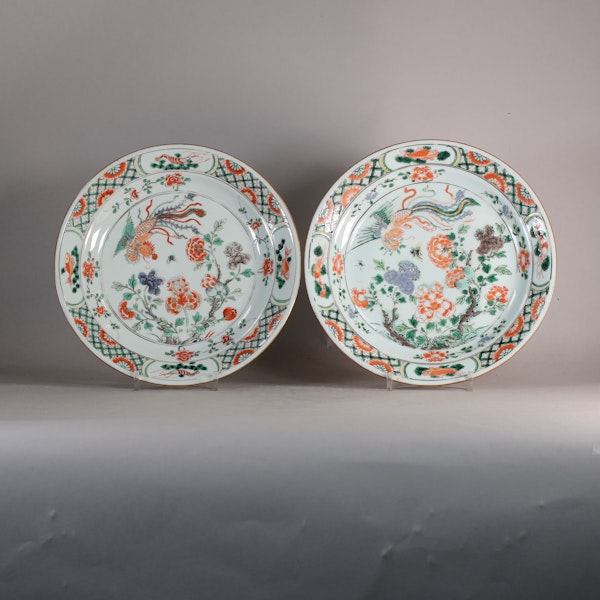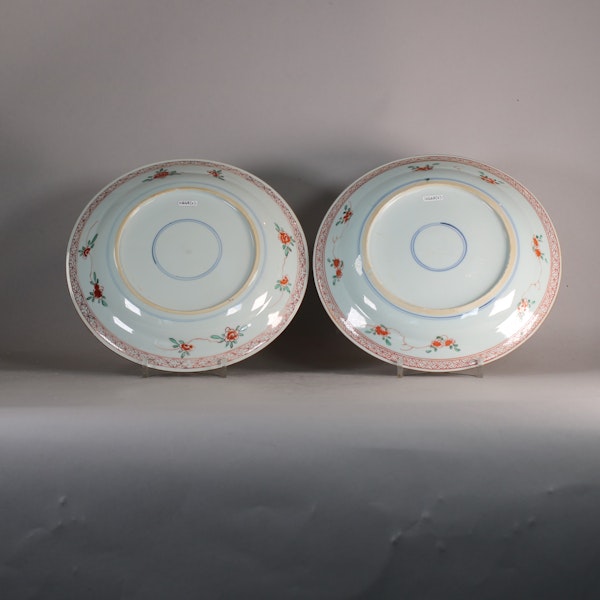Pair of Chinese famille verte plates, Kangxi (1662-1722)
Pair of Chinese famille verte plates, Kangxi (1662-1722)
POA
Description
Pair of Chinese famille verte plates, Kangxi (1662-1722), each decorated with a phoenix (fenghuang) with long tail feathers and bright plumage in flight over a peony garden, with butterflies and other insects flying amongst the blooms, the cavettos with four floral sprays and the rims with four cartouches containing fish and crustaceans swimming amongst water weeds, against a diaper ground with large stylised half-flower heads; the reverse with further floral sprays and concentric circles in underglaze blue all within a diaper band in iron red to the rims,
Diameter: 24.5 cm. (9 5/8in.) and 24 cm. (9 7/16in.)
Condition: Crack across the base, the other with star crack to the base, both with rubbing to the enamels.
Notes:
Known as the ‘king of the flowers’ (huawang), peony is a highly symbolic flower in China. The flowers, roots and seeds have been used in traditional medicine for millennia, but owing to Empress Wu’s appreciation for the flower it became associated with beauty and wealth from the Tang Dynasty onwards. Peonies continued to be associated with royalty and high status throughout the Song, Yuan and Ming, and are still celebrated every year at a festival held in Jinghan Park, the former Imperial Garden. The phoenix, too, represents female royalty: in ancient China the fenghuang symbol had comprised two separate entities to represent yin and yang; the male bird (鳳, feng) and female (凰 huang), but during the Ming the two gradually merged to become the symbol of the empress.
| item details | |
|---|---|
| Material and Technique | Porcelain with overglaze enamel decoration in the famille verte palette |
| Origin | Chinese |
| Condition | Good |
| Diameter | Diameter: 24.5 cm. (9 5/8in.) and 24 cm. (9 7/16in.) |
Product REF: W668




